Today we’re going to talk about SBIE, it’s an acronym for speaker boundary interference effect. Let’s look at the definition. I see a lot of photos that people send in showing me their room layout and their speaker and amplifier and listening positions and I see a lot of the SBIE going on. It’s crazy and I just don’t quite understand why I see so much of it but I guess I can understand why people can hear it. That’s the thing that is problematic but let’s start with the definition and see if we can get this kind of nailed out because it’s very critical.
So you have your room, you have your speakers and we know that this area:
are really problematic. This area is problematic for reflections:
and this area here is problematic for pressure:
So we have two issues that we need to address, reflections and pressure. As we move our speakers closer to the wall, what do we have? We shorten the distance so we increase both of these issues exponentially and we just simply can’t do that. People say well what’s the minimum distance between the sidewalls and I’m going to tell you right now the minimum distance is four feet. Let’s use that as our benchmark. Let’s don’t have speakers any closer to the wall, any closer than four feet to the front wall and any closer than four feet to the sidewall.
What happens when it gets closer?
We get distortion so the engineer that designed the speaker, he did his best, and believe me they do a great job in creating an instrument that produces sound with hardly any distortion, produces all the sounds all the frequencies without distortion or distortions so low you’ll never be able to hear it, the amplifier will never be able to amplify it. So when you move the speaker close to the wall and create SBIE you negate everything the speaker engineer did to the speaker. You create this area of reflections here:
or interference boundary effect. You’re so close to the boundary that you create higher pressure areas and a comb filtering effect between the speaker and the wall so you produce distortion.
What does that distortion do?
It sounds like another speaker, it produces a phantom image. So now you have a speaker that’s all about distortion and then you have a speaker here that’s all about no distortion and producing quality sound. So then these two the phantom image and your speaker mixed together, so at the listening position you get a combination of both, and that’s not what you want. Your room then is really working against you.
So you have to be careful because it’s a distortion producing situation. I see some situations where the speaker is right against the wall. Well you just can’t do that, you just can’t produce a device that’s moving and vibrating against another structure that will take those vibrations and move also. So you have to be very careful.
Let’s use four-feet as our minimum distance between the sidewall I think that’s a good benchmark to shoot for, not six-inches, not two-inches, not right against the wall but four feet, forty-eight inches let’s use that as our benchmark. Stay away from the phantom images and we don’t want to increase the pressure here:
Our goal is to minimize the pressure because the higher the pressure in that area, the higher the low-frequency issues and distortions become and the more treatment you’re going to have to put in to solve those issues. So keep the speaker as far away from the side walls and the front wall as you can because we got pressure and reflection issues that we have to deal with and that produces distortion and the last place we want distortion is right next to our speakers.
In Summary
I hope this discussion on speaker boundary interference effect helped. Feel free to contact me directly at: 520 – 392 – 9486 MST or info@acousticfields.com. If you would like to learn more about room acoustics please sign up for my free videos and ebook by joining the mailing list here. And if you would like your room acoustic issues analysed for free by me then please fill in the form here and I will be happy to take a look for you.
Thanks and speak soon
Dennis


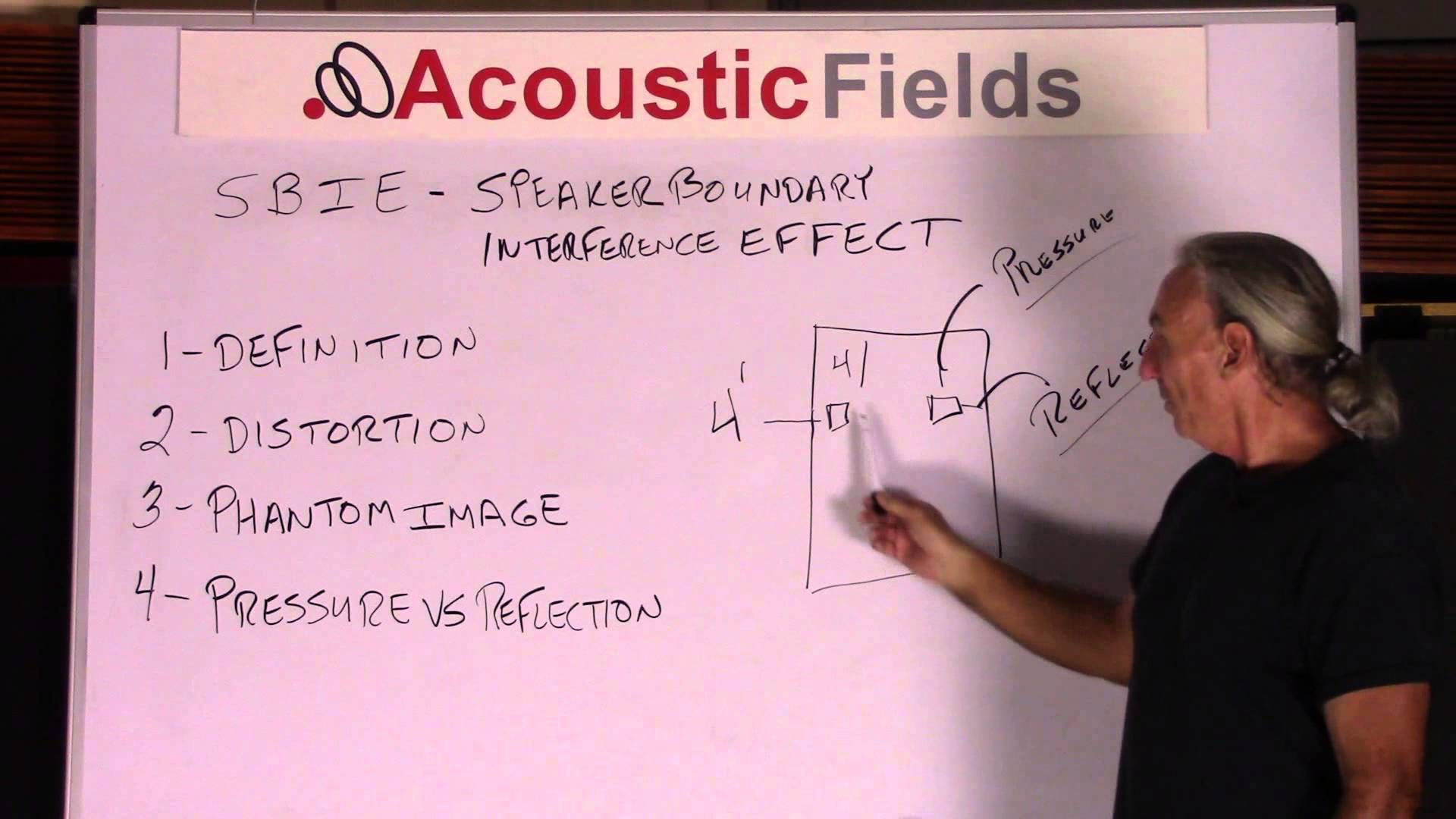
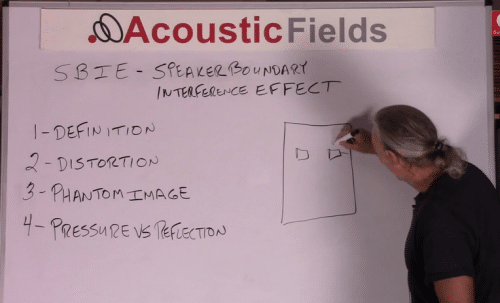
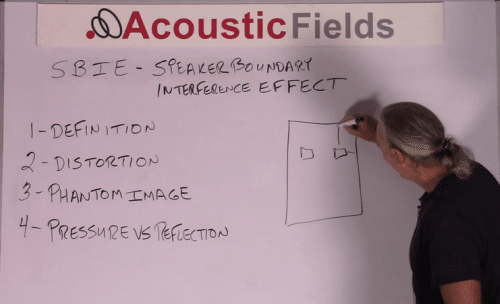
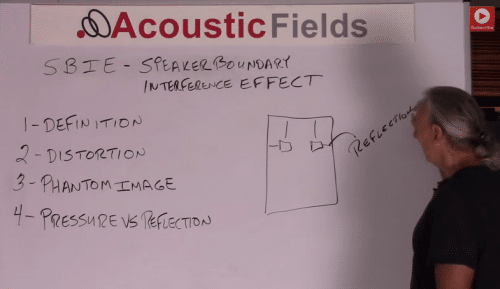
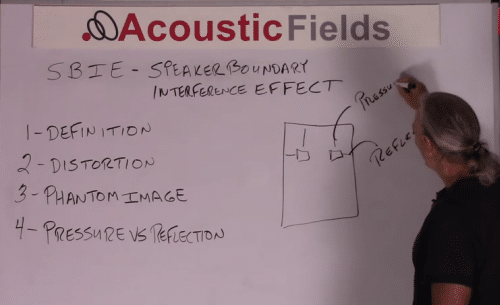
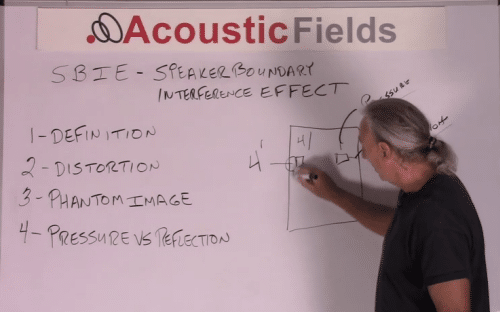
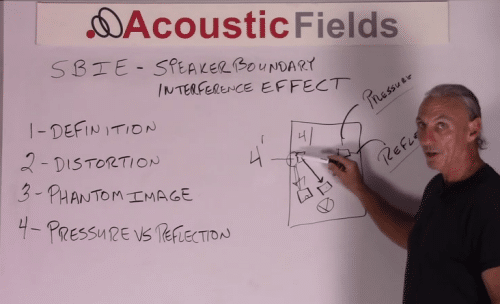





I am a Bass player that also runs sound but all I know is playing in a very large area like a field or stadium I am now working on redesigning our Church soundsystem and our deacons have had a guy come in and is wanting us to design the system exactly the opposite as you say with multiple speakers on outside walls I am advising against it but am not the boss we had someone design our system 20 years ago and have been running mono system since it sounds,like crap keep the videos coming they come with a lot of help for,me,to prove a point they are wrong. Sincerely thanks I will be in touch with questions
D, I never understood why PA companies add more speakers into a room that is not properly treated for reflections. Its insanity to me. They keep adding speakers (energy) into a room that cannot handle what they have already. Speaker companies will argue dispersion and audience coverage but what good is that if Rt-60 times go higher with more energy from additional sources.